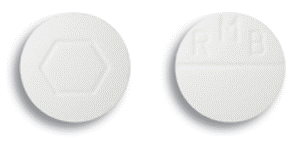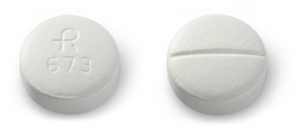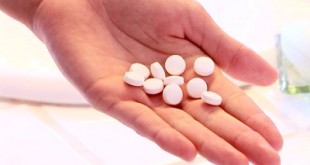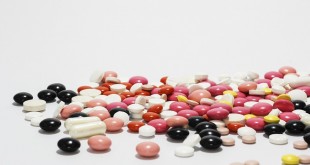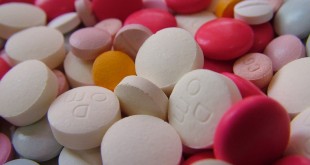Indication
Diuretic Agent (agent to increase urine output), Antihypertensive.
Dose
Doses are individualized depending on patient’s condition. Please consult your doctor or pharmacist for suggestion of treatments for your hypertension. Once you are started on medications for your hypertension, take the medication regularly and according to instructions.
Administration
Generally, it is advisable to be taken with or after meals to reduce gastrointestinal discomfort. Otherwise, refer product inserts for specific instructions:
| Genetic Name |
Administration |
|
Frusemide
|
Take with / after meals |
|
Hydrochlorothiazide
|
With food |
|
Spironolactone
|
With food |
| Indapamide | With food |
| Amiloride | With food |
Mechanism Of Action
Diuretic drugs increase urine output by the kidney (i.e., promote diuresis). Increase in urine output will decrease volume of fluids in the body and therefore will reduce the systemic vascular resistance, thus in turn will reduce the blood pressure.
Most diuretics produce diuresis by inhibiting the reabsorption of sodium at different segments of the renal tubular system. There are three main types of diuretics:
- Loop diuretics – inhibit the sodium-potassium-chloride co-transporter in the thick ascending limb.
- Thiazide diuretics – inhibit the sodium-chloride transporter in the distal tubule.
- Potassium-sparing diuretics – unlike loop and thiazide diuretics, some of these drugs do not act directly on sodium transport. Some drugs in this class antagonize the actions of aldosterone (hormone that controls the balance of water and salts in the kidney by keeping sodium in and releasing potassium from the body) at the distal segment of the distal tubule. This causes more sodium (and water) to pass into the collecting duct and be excreted in the urine.
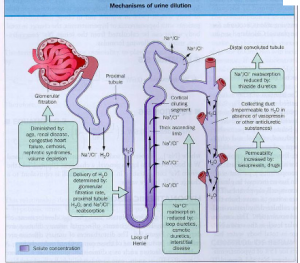
Kidney – Renal Tubular System
This is accomplished by altering how the kidney handles sodium. If the kidney excretes more sodium, then water excretion will also increase.
Antihypertensive effect of diuretics is derived from the ability to reduce blood volume, cardiac output, hence with long-term therapy, reduced systemic vascular resistance will thus reduce the blood pressure
Side Effects
Side effects for each drugs are individualized and may differ between patients. Most common side effects for each drugs are listed below:
| Genetic Name |
Possible common side effects include |
| Frusemide
(Loop Diuretic) |
Dermatitis, erythema (redness of the skin), itching, blurred vision, postural hypotension (a drop in blood pressure due to a change in body position (posture), nausea, tinnitus (hearing ringing, buzzing, or other sounds without an external cause in the one or both ears or in the head), decrease serum potassium |
| Hydrochlorothiazide (Thiazide) | Gastrointestinal disturbance, headache, dizziness, postural hypotension, decrease serum potassium |
| Indapamide (Thiazide) | Fatigue, orthostatic hypotension (abnormal decrease in blood pressure when a person stands up), decrease serum potassium |
| Spironolactone (Pottasium sparing diuretic) | Headache, drowsiness, gastrointestinal disturbance, decrease serum sodium (hyponatraemia), decrease serum potassium (hypokalaemia) |
| Amiloride (Pottasium sparing diuretic) | Headache, fatigue, nausea, orthostatic hypotension (abnormal decrease in blood pressure when a person stands up) |
Consult your doctors or pharmacists if you are facing any side effects from the diuretic drugs that you are taking.
Storage
Advisable to keep in the original envelopes with instructions on how to take clearly stated on the labels. Keep at room temperature otherwise, refer product insert for specific temperature storage.
For further information, refer MyHealth web site ‘Cara Penyimpanan Ubat Yang Betul’
References
- Cardiovascular Pharmacology Concepts (http://www.cvpharmacology.com/diuretic/diuretics)
- http://pharmacologycorner.com/mechanism-of-action-video
- British National Formulary (BNF) 61 March 2011
- MIMS 128th Edition 2012
- ‘Cara Penyimpanan Ubat Yang Betul’ (http://www.myhealth.gov.my/v2/index.php/my/ubat-a-anda/umum/cara-penyimpanan-ubat-yang-betul)
- Mechanisms of Action of Diuretics (http://www.cvpharmacology.com/Acilliary/search)
- Buah Pinggang / Ginjal ~ system tubular ginjal (http://www.cvpharmacology.com/Acilliary/search)
| Last Reviewed | : | 2 March 2016 |
| Writer | : | Pn. Azura Binti Musa |
| Translator | : | Pn. Azura Binti Musa |
| Accreditor | : | Dr. Siti Norlina Binti Md. Said |
 PENDIDIKAN PESAKIT Kementerian Kesihatan Malaysia
PENDIDIKAN PESAKIT Kementerian Kesihatan Malaysia
